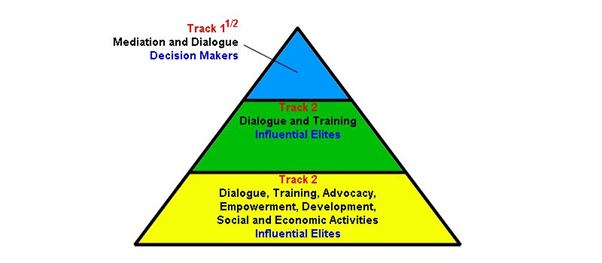
by Maryam Mastoor 14 April 2023
Since 1947 India and Pakistan are at loggerheads. There had been intermittent periods of peace, but they were not long-lived. The nuclear disposition of both countries and the presence of mistrust, in tandem makes the region the most vulnerable spot for conflict. In such a scenario, efforts garnered to mitigate trust deficit between the two countries, are acutely needed. If both countries fail to uplift such efforts, the existing conflict can take shape of a nuclear confrontation.
Daniel Seth Markey, a US based security analyst has cautioned the world against a possible nuclear confrontation between India, Pakistan and China. He referred to the incident of misfire of Brahmos missile in sparsely populated area of Mian Channu in Pakistan in March, 2021. That misfire could lead to war in the region. He expressed deep concerns over the nuclear status of the antagonistic neighbours in South Asia. This conflict of India and Pakistan endangers the world peace as with the evolving military technologies it can become more volatile.
In the past there had been peace overtures between India and Pakistan, however none of them could bring up a permanent state of peace. In 1991, the track two diplomacy initiatives were launched. The first meeting was held at Neemrana Fort in India’s Rajhastan. The United States Information Service provided sponsorship for the initiative. In 1992, both countries signed a joint declaration, prohibiting the use of chemical weapons against each other. The signing of this declaration may have strings attached to track two diplomacy. However, in 1995, India started preparing its nuclear weapons for nuclear tests. Albeit India’s preparations for nuclear tests, some documents are available to show that there were some instances of track two diplomacy going on in the background between India and Pakistan between 1995 till 2011. These engagements were organized by Pakistan India Peoples Forum for Peace and Democracy (PIPFPD), a non-state organization, which has both India and Pakistan chapters.
Despite peace initiatives operating in the background, in 1998 India tested its nuclear weapons for the second time at Pukhran and in response, Pakistan also tested its nuclear weapons in Chaghi. Notwithstanding the demonstration of nuclear capability by both countries in 1998, PIPFPD held a conference in Peshawar in the same year in November. Another track two diplomacy initiative by the name of Balusa, (name of the group based on the language of subcontinent), led by Shrin Tahir Kheli was going on in parallel with PIPFPD. The Balusa initiative, which continued to operate between 1995 till 2003, claims to increase engagement of people between the two countries. To what extent these initiatives have been successful, needs to be investigated. However, it can be established that these initiatives did try to build bridges between people of both countries in difficult times as well.
In February 1999, the Prime Minister of India, Mr. Atal Bihari Vajpayee visited Pakistan on the invitation of Prime Minister of Pakistan, Mr. Nawaz Sharif. In early 1999, General Pervaiz Musharraf, chief of army staff in Pakistan, started a military incursion against India in the area of Kargil. It is alleged that the civilian government was not taken into confidence before taking this step. The relations of both countries were badly affected. But in 2003 things began to normalize and a peace venture on state level was started between India and Pakistan. In 2003 Mr. Vajpayee visited Pakistan and a ceasefire agreement was signed. Was back channel diplomacy instrumental in this? There is hardly any literature available to answer this question.
It is ironic to note that after Bhartiya Janta Party’s (BJP) most significant attempt of normalizing the relations of India and Pakistan in 2003 orchestrated by Prime Minister Vajpayee, BJP lost elections in 2004. And on the other hand, in 2019 false operation of India in Balakot of Pakistan made BJP a victorious political party. The mistrust for Pakistan has permeated deep in Indian society, therefore robust engagements between people of both countries are imperative for creating understanding and finally reaching to a settlement of long standing disputes.
In August, 2019 the BJP’s government revoked article 370, which guarded Jammu and Kashmir’s special status. There was again an impasse in bilateral relations. Pakistan reacted strongly on a diplomatic front, against India’s unilateral action regarding a disputed territory of Jammu and Kashmir. However, despite all odds, in November, 2019 Pakistan and India together, launched the project of Kartarpur Corridor, it is said to be a fruit of people’s effort. Sikhs from India can now access the holy place of Kartarpur without visa, enabling them to visit (with limited access) their scared place in Pakistan. In 2022, senior policy makers, practitioners, journalists from India and Pakistan met twice, under the auspices of Chao Track Two, for holding discussion on climate change, Ukraine crises, Afghanistan situation, including the contemporary situation in Kashmir. It is therefore, not only prudent but is extremely pertinent to gear efforts for mitigating mistrust between the two countries, people to people contacts can be instrumental in this regard.
